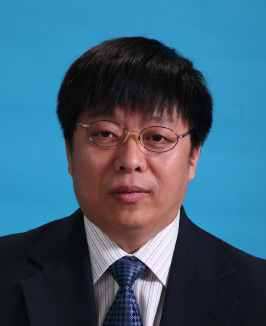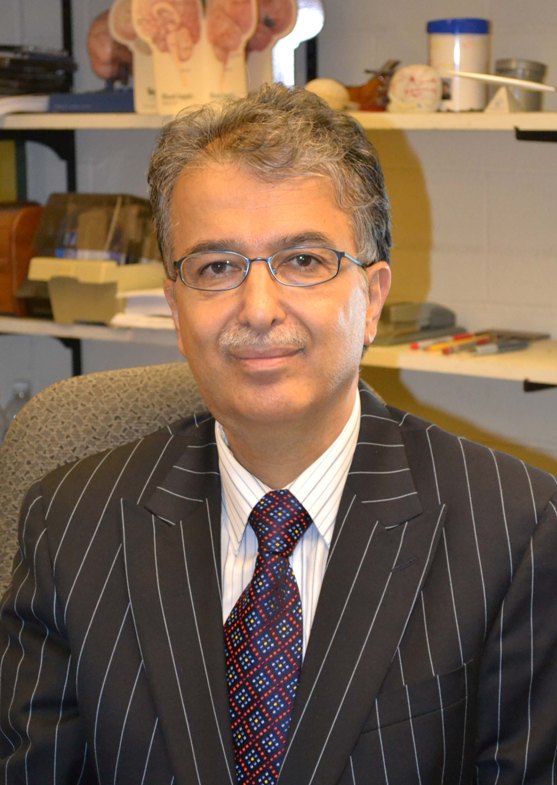
Topic 1:
Self-Learning Control of Nonlinear Systems based on Iterative Adaptive Dynamic Programming Approach

Speaker: Derong Liu (Institute of Automation, Chinese Academy of Sciences)
Abstract: The optimal control of nonlinear systems often requires solving the nonlinear Hamilton-Jacobi-Bellman (HJB) equation instead of the Riccati equation as in the linear case. The discrete-time HJB (DTHJB) equation is more difficult to work with than the Riccati equation because it involves solving nonlinear partial difference equations. Though dynamic programming has been a useful computational technique in solving optimal control problems for many years, it is often computationally untenable to run it to obtain the optimal solution, due to the backward numerical process required for its solutions, i.e., the well-known "curse of dimensionality". A self-learning control scheme for unknown nonlinear discrete-time systems is developed for this purpose. An iterative adaptive dynamic programming algorithm via globalized dual heuristic programming technique is developed to obtain the optimal controller with convergence analysis. Neural networks are used as parametric structures to facilitate the implementation of the iterative algorithm, which will approximate at each iteration the cost function, the optimal control law, and the unknown nonlinear system, respectively. Simulation examples are provided to verify the effectiveness of the present self-learning control approach.
Biography: Derong Liu received the Ph.D. degree in electrical engineering from the University of Notre Dame in 1994. He was a Staff Fellow with General Motors Research and Development Center, Warren, MI, from 1993 to 1995. He was an Assistant Professor in the Department of Electrical and Computer Engineering, Stevens Institute of Technology, Hoboken, NJ, from 1995 to 1999. He joined the University of Illinois at Chicago in 1999, and became a Full Professor of electrical and computer engineering and of computer science in 2006. He was selected for the "100 Talents Program" by the Chinese Academy of Sciences in 2008. He has published 10 books. Currently, he is the Editor-in-Chief of the IEEE Transactions on Neural Networks and Learning Systems. He received the Faculty Early Career Development (CAREER) award from the National Science Foundation (1999), the University Scholar Award from University of Illinois (2006-2009), and the Overseas Outstanding Young Scholar Award from the National Natural Science Foundation of China (2008). He is a Fellow of the IEEE.
Topic 2:
Multiway Component Analysis and Tensor Decompositions and their Potential Applications

Speaker: Andrzej Cichocki (Head of the Laboratory for Advanced Brain Signal Processing, RIKEN Brain Science Institute, Saitama, Japan)
Abstract: In recent years, the demands for analysis of multidimensional and very large-scale data have escalated as the dimensionality and sheer volume of data has grown rapidly in, bioinformatics, social networks, neuroscience, imaging, and financial markets. Although the basic models for matrix and tensor (i.e., multiway array) decompositions and factorizations such as Tucker and Canonical Polyadic (CP) decomposition models were proposed long time ago, they have only recently emerged as promising tools for exploratory analysis of large-scale and multidimensional data in diverse applications, especially, when it comes to dimensionality reduction, multilinear independent component analysis, feature extraction, classification, brain computer interface, prediction and multiway clustering . By virtue of their multiway nature, tensors provide powerful tools for the analysis and fusion of large-scale, multi-modal, massive data together with a mathematical backbone for the discovery of underlying hidden complex data structures. In this talk, we review some recent efficient unsupervised learning algorithms for multilinear blind source separation (BSS), nonnegative tensor factorizations and multiway component extraction using various criteria, constraints and assumptions. Moreover, we briefly overview emerging models and approaches for multi-block constrained matrix/tensor decompositions in applications to group and linked multilinear BSS/ICA, Multiway Canonical Correlation Analysis (MCCA) and Higher Order (tensor) Partial Least Squares (HOPLS) problems (detail).
Biography:Andrzej Cichocki received the M.Sc. (with honors), Ph.D. and Dr.Sc. (Habilitation) degrees, all in electrical engineering. from Warsaw University of Technology (Poland). Since 1976, he has been with the Institute of Theory of Electrical Engineering, Measurement and Information Systems, Faculty of Electrical Engineering at the Warsaw University of Technology, where he obtain a title of a full Professor in 1995. He spent several years at University Erlangen-Nuerenberg (Germany), at the Chair of Applied and Theoretical Electrical Engineering, as an Alexander-von-Humboldt Research Fellow and Guest Professor. In 1995-1997 he was a team leader of the laboratory for Artificial Brain Systems, at Frontier Research Program RIKEN (Japan), in the Brain Information Processing Group. He is currently Senior Team Leader and Head of the laboratory for Advanced Brain Signal Processing, at RIKEN Brain Science Institute (JAPAN). He is co-author of more than 300 technical papers and 4 monographs (two of them translated to Chinese): Nonnegative Matrix and Tensor Factorizations: Applications to Exploratory Multi-way Data Analysis, John Wiley-2009; Adaptive Blind Signal and Image Processing (co-authored with Professor Shun-ichi Amari ;Wiley, April 2003 -revised edition), CMOS Switched-Capacitor and Continuous-Time Integrated Circuits and Systems (co-authored with Professor Unbehauen; Springer-Verlag, 1989) and Neural Networks for Optimizations and Signal Processing (1994). His profile and h-index can be found at: http://scholar.google.com/citations?user=wpZDx1cAAAAJ&hl=en.
Topic 3:
Intelligent Infrastructure, Sustainable Design, and Signature Structures

Speaker: Hojjat Adeli, Abba G. Lichtenstein Professor (The Ohio State University)
Abstract: Three topics of Intelligent Infrastructure, Sustainable Design, and Signature Structures and their interconnections are presented in this Keynote Lecture. The focus of building sustainability so far has been mostly on saving energy and water and making them more environmentally friendly by, say, reducing the carbon emissions. It is estimated that over 70% of the city’s green gas are emitted from buildings. As reported in the LEED (Leadership in Energy & Environmental Design) 24%-50% of energy use, about 30% of CO2 emissions, 40% of water use, and 70% of solid water can be reduced for sustainable buildings. Sustainable building design initiatives strive to transform structural developments to more environmentally conscious building design and ultimately improve the quality of life.
In this Keynote Lecture the author presents the vision of sustainability via intelligent infrastructure. This vision is broad and encompasses not only structures but also transportation systems. The author envisages a new generation of civil smart structures where intelligent sensors and actuators are integrated for health monitoring and vibration control of structures under extreme dynamic loading (Adeli and Kim 2009). The health of such a smart structure is continuously monitored in real time by sensors and its behavior is actively controlled in an effective and efficient way through properly designed actuators. In addition to the innovative hardware technologies such as smart materials, sensors and actuators, advanced computing technologies such as data mining and automatic feature extraction techniques play an important role in creating an effective smart structure technology. It is shown the smart structure technology is particularly attractive for tall buildings leading to a much lighter structure with substantial weight reduction in the order of 20-35%. Multidisciplinary methodologies and information technologies are presented for health monitoring and nonlinear active control of tall building structures subjected to extreme dynamic loading such as those due to winds or earthquakes.
Biography:Hojjat Adeli received his Ph.D. from Stanford University in 1976 at the age of 26. He has authored 484 research and scientific publications in various fields of computer science, engineering, applied mathematics, and medicine including 14 books such as Machine Learning - Neural Networks, Genetic Algorithms, and Fuzzy Systems (Wiley, 1995); Wavelets in Intelligent Transportation Systems (Wiley, 2005); Intelligent Infrastructure (CRC Press, 2009); and Automated EEG-based Diagnosis of Neurological Disorders - Inventing the Future of Neurology. He is the Founder and Editor-in-Chief of Computer-Aided Civil and Infrastructure Engineering, now in 25th year of publication and Integrated Computer-Aided Engineering, now in 18th year of publication. He is also the Editor-in-Chief of International Journal of Neural Systems. In 1998 he received the Distinguished Scholar Award from OSU, “in recognition of extraordinary accomplish-ment in research and scholarship”. In 2005, he was elected Honorary/Distinguished Member, ASCE: "for wide-ranging, exceptional, and pioneering contributions to computing in civil engineering and extraordinary leadership in advancing the use of computing and information technologies in many engineering disciplines throughout the world.” In 2007, he received the OSU College of Engineering Peter L. and Clara M. Scott Award for Excellence in Engineering Education “for sustained, exceptional, and multi-faceted contributions to numerous fields including computer-aided engineering, knowledge engineering, computational intelligence, large-scale design 1optimization, and smart structures with worldwide impact,“ as well as the Charles E. MacQuigg Out-standing Teaching Award. In 2008 he was Elected Fellow of the American Association for the Advancement of Science, “for distinguished contributions to computational infrastructure engineering and for worldwide leadership in computational science and engineering as a prolific author, keynote speaker, and editor-in-chief of journals.” In 2010 he was profiled as an Engineering Legend in Leadership and Management in Engineering, ASCE. Same year he was included in The Ohio State University Buckeye Wall of Brilliance, “a permanent exhibition documenting the areas of inspiration and innovation from Buckeyes throughout Ohio State’s history.” In 2011 he was elected an IEEE Fellow “for contributions to computational intelligence in infrastructure engineering.” He is the Editor-in-Chief and Founder of international research journals Computer-Aided Civil and Infrastructure, now in 27th year of publication, and Integrated Computer-Aided Engineering, now in 20th year of publication. He is also the Editor-in-Chief of International Journal of Neural System.
Topic 4 ( Feature Talk):
An EEG-based Hybrid BCI System and Its Applications
Yuanqing Li
Research Center for Brian Computer Interfaces & Brain Information Processing
South China University of Technology, Guangzhou